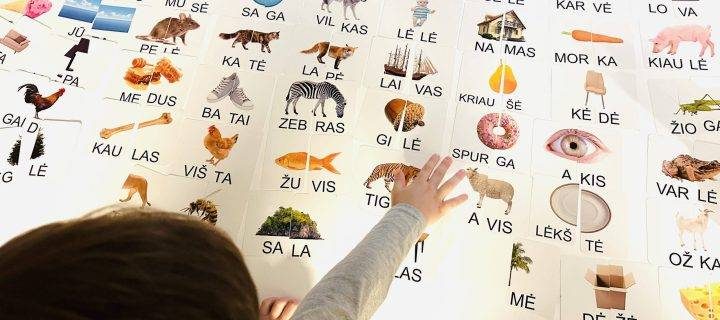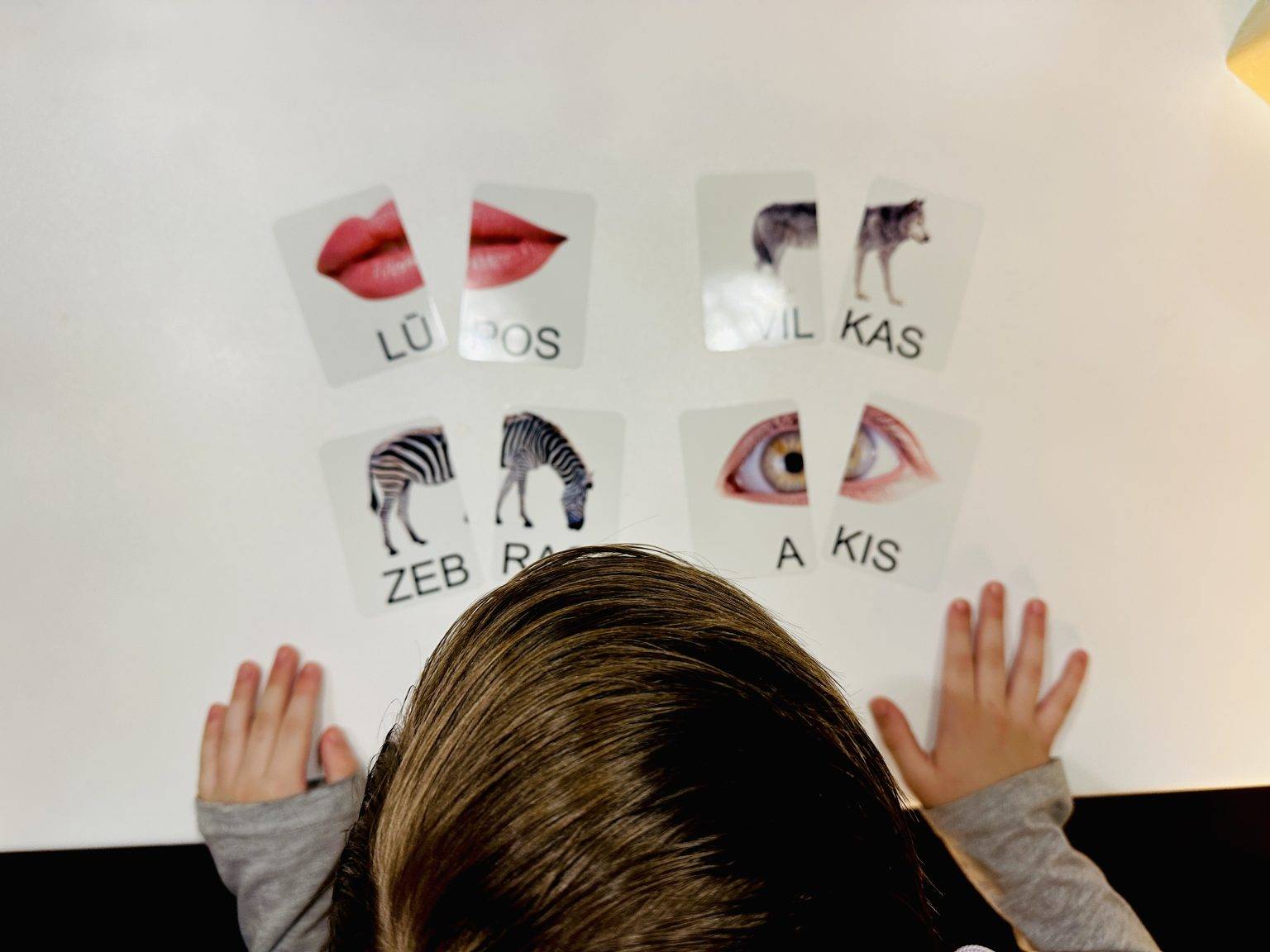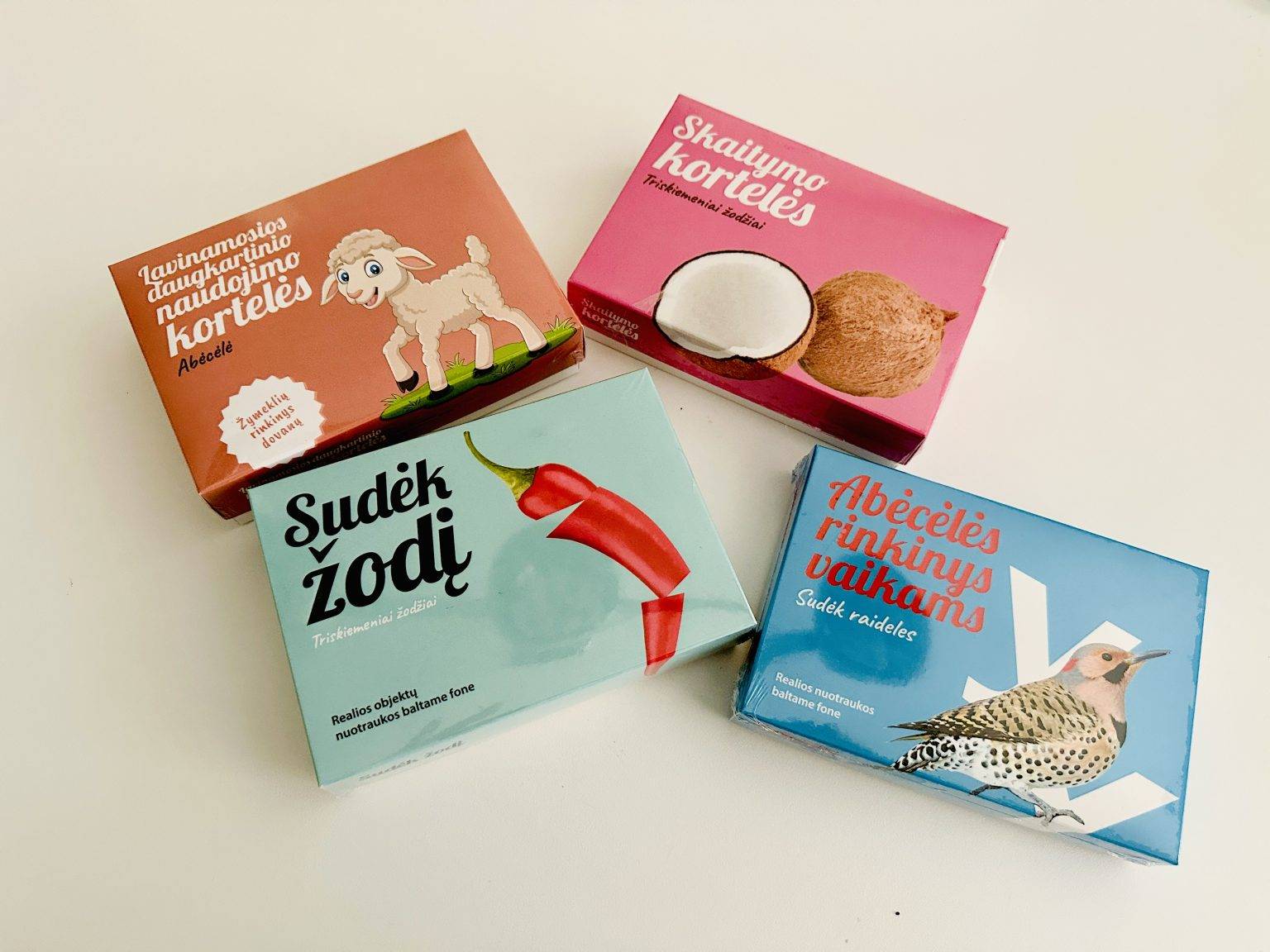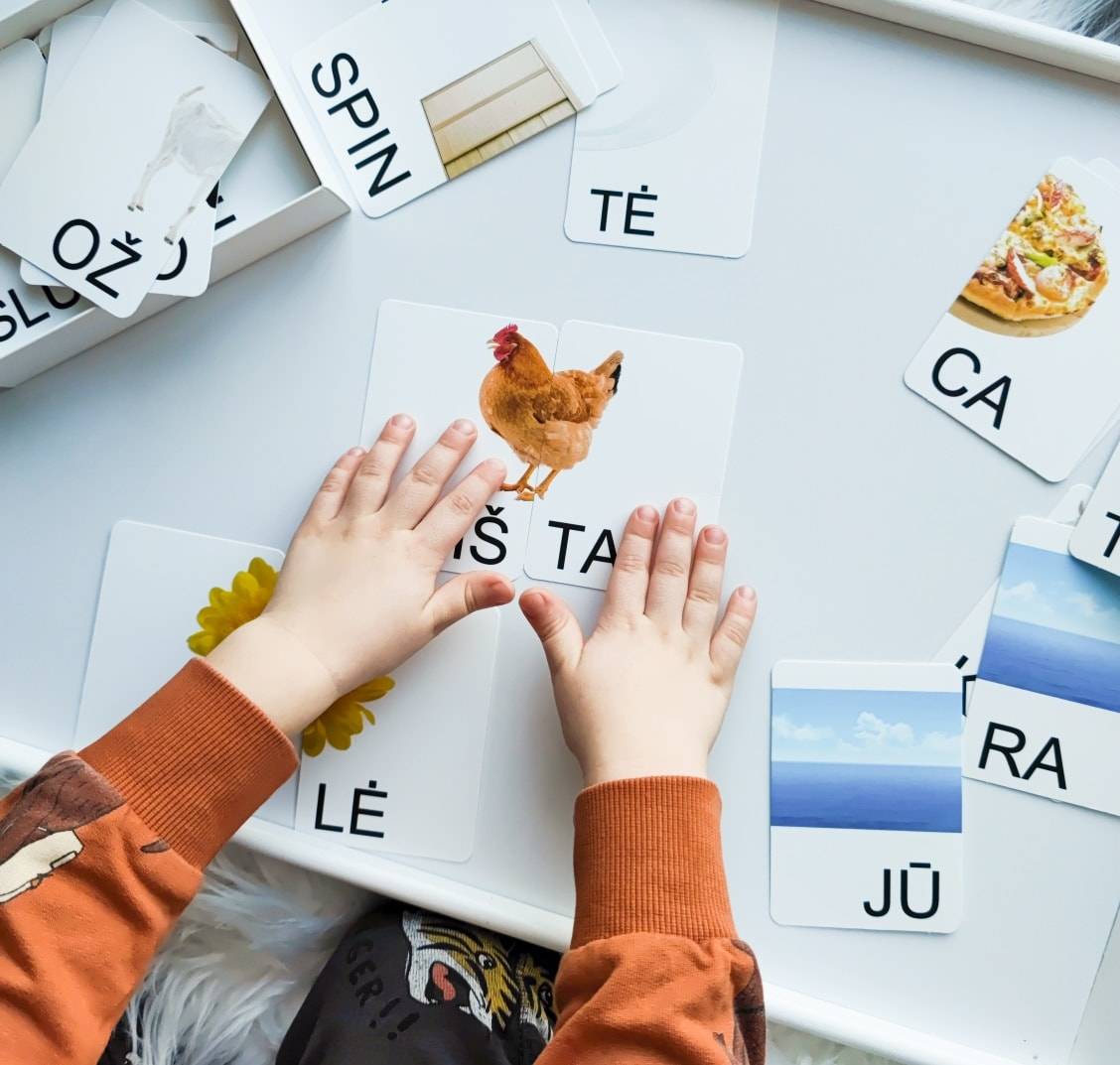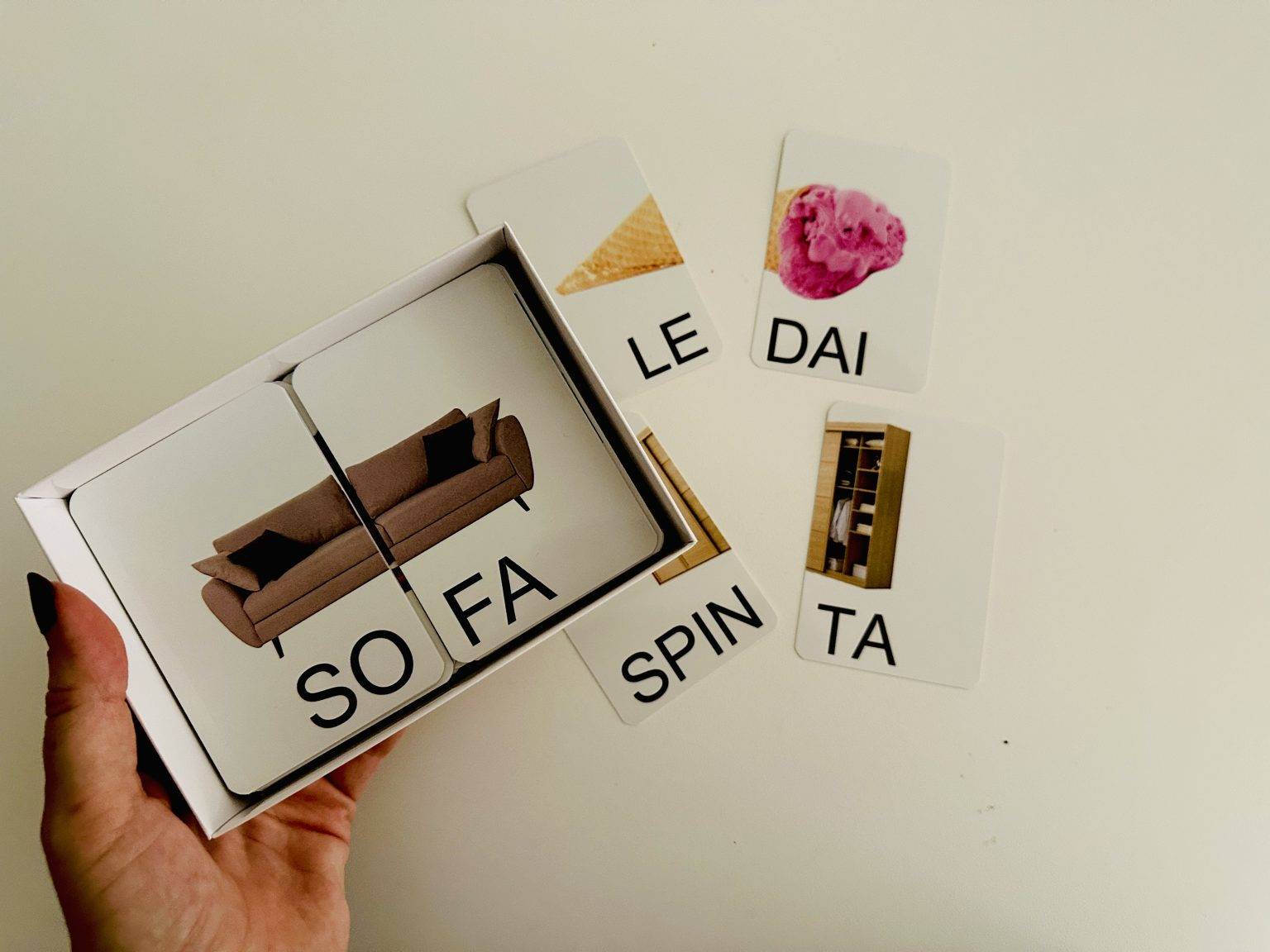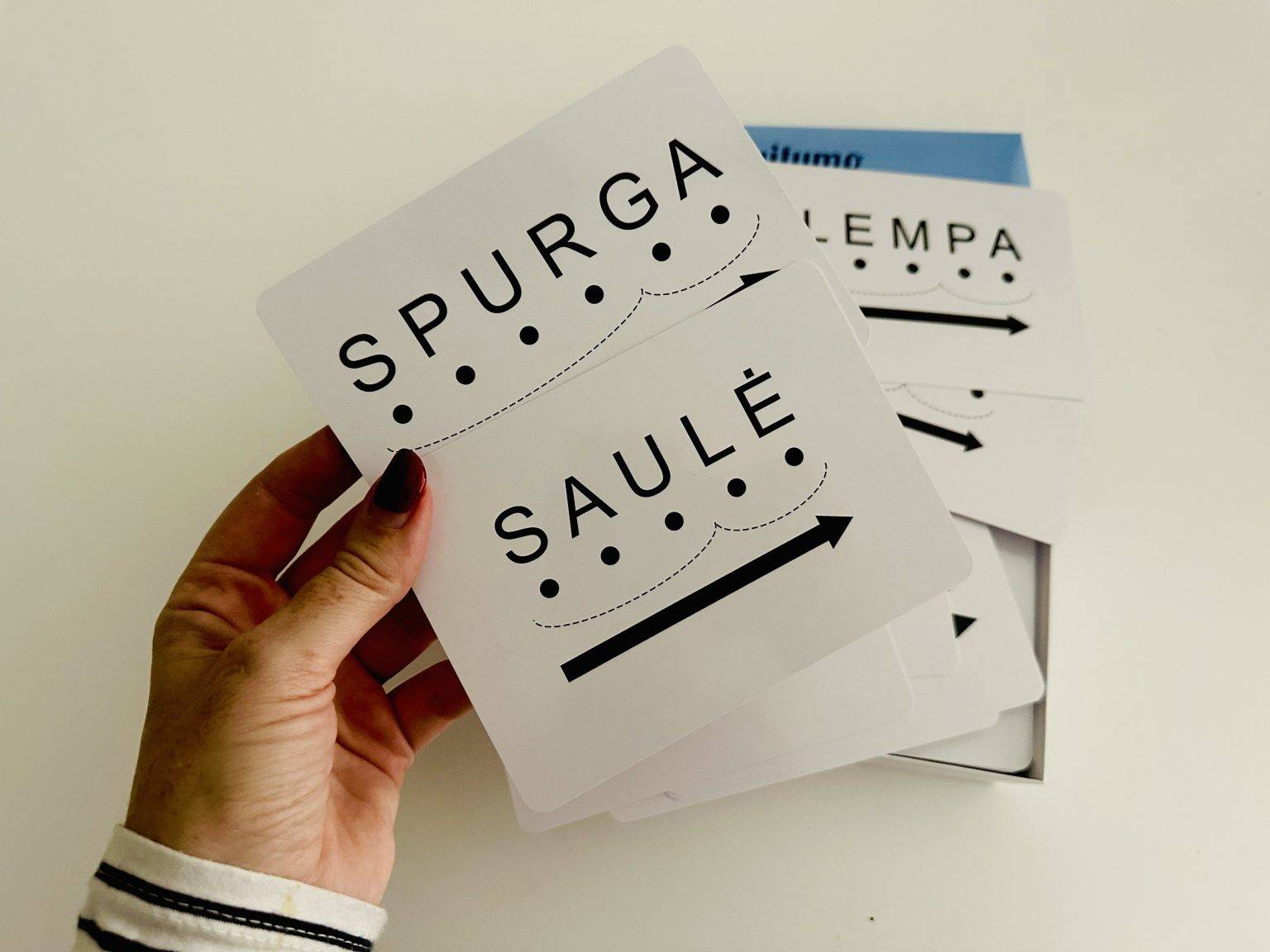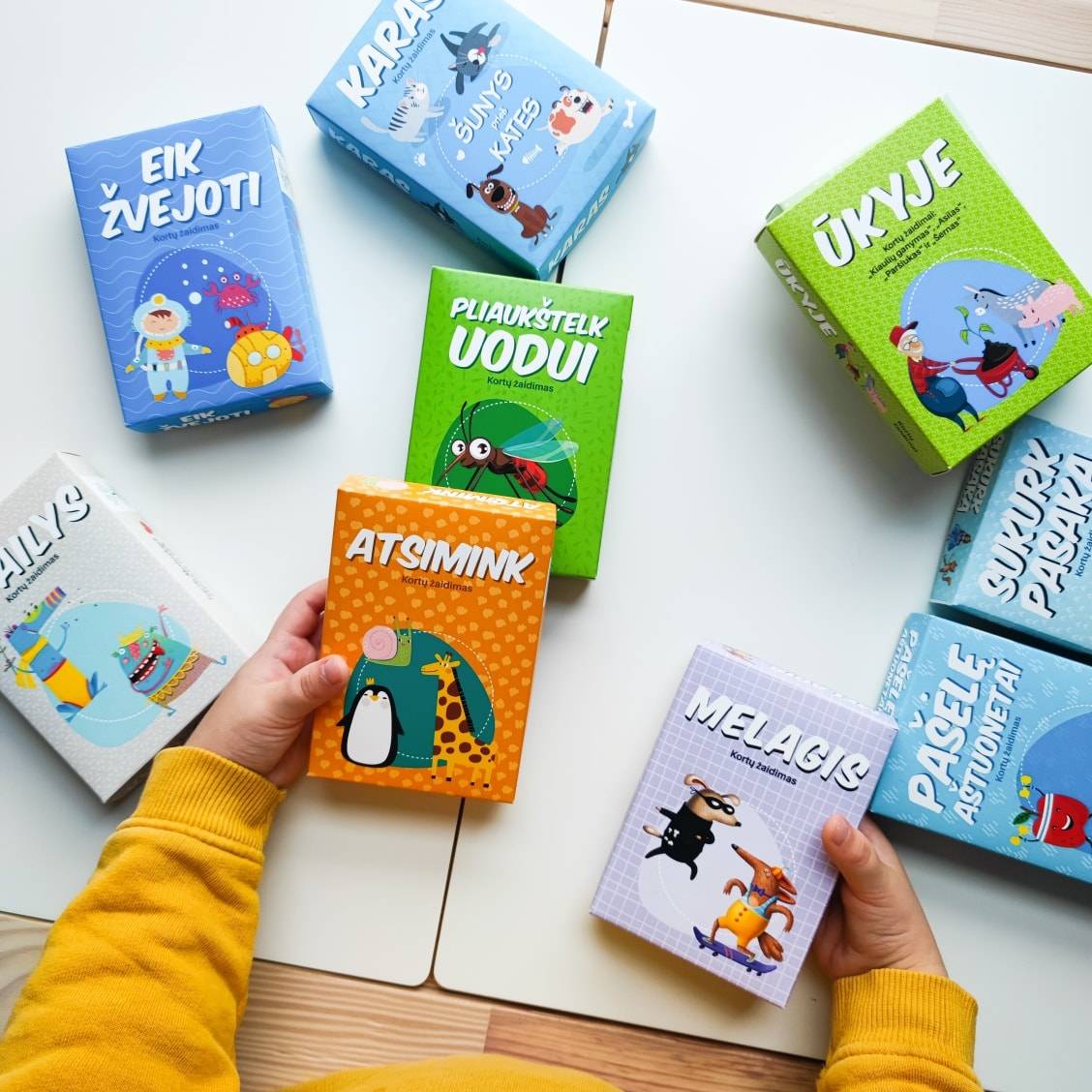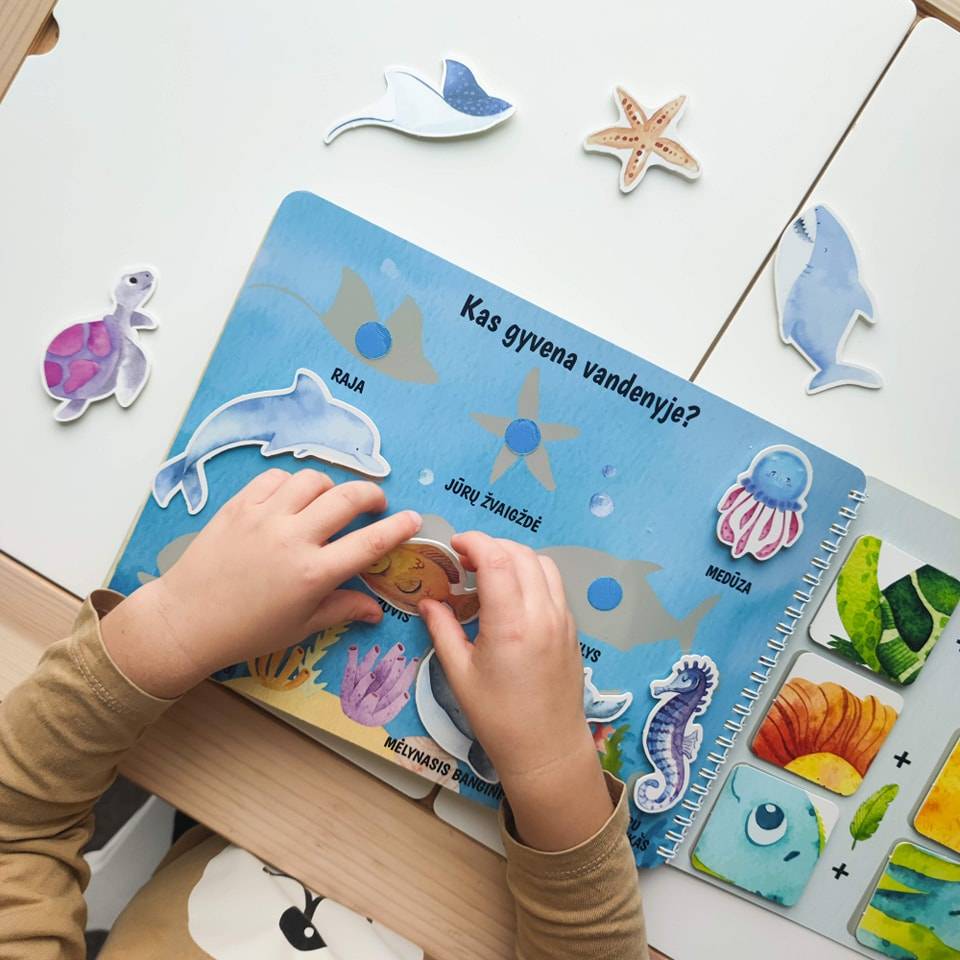When a young child starts to talk increasingly more and sentences become both logical and complex, we think about his upcoming introduction to letters and reading. But when is the best time for children to start learning to read and how to start this process?
We share with you our tips for learning to read and the best Yes for skills educational tools to help you master letters, syllables and how to combine them into words. By the way, thanks to these tools, six-year-old Motiejus – kid of one of the co-founders of “Travel 4 kids” Agne, has started reading.
Learning to read
When and how to learn to read? Getting to know letters and learning to read is a very important step in the life of a growing toddler. How you introduce letters, words, books and reading to your little one is very likely to determine not only his ability to learn, but more importantly, it can determine his WANT to learn, to know and of course to read. If parents introduce letters and reading slowly, gradually and with patience, calmness and understanding, then the child will feel supported by adults and will be much more confident in his/her start in education. However, if parents are sometimes pushy, impatient and criticising, the little world explorer’s interest in the process of learning to read may diminish and be replaced by anger, frustration and a reluctance to learn and especially to read.
So what is important to know about letter recognition and reading? Here are some interesting facts:
- Children usually start reading at the age of 5-7.
- Children can start reading when they are able to recognise letters or letter combinations and connect those letters to sounds.
- Understanding sounds is a very important part of learning to read. Children should learn to recognise the different sounds they hear in their environment, which can be helped by playing games, listening to music and singing together.
- Children can learn to read not only from words but also from pictures. Even very young children will be able to understand who the characters are, what is happening in the story and how they can understand the plot of the book by seeing the pictures.
- The US National Institute of Literature points out that the amount of time adults read with pre-schoolers predicts their reading skills in primary school. If children spend a lot of time reading at home and at school, they will have the opportunity to be exposed to new words and their meanings, thereby enriching their vocabulary and improving their grammatical knowledge.
- The benefits of reading for little ones are enormous! Reading books sparks their imagination, tells them about situations they do not experience in real life, shows them the differences between people, the range of emotions, teaches them how to name emotions and situations, and tells them about relationships between people.
Early reading
It is believed that it is through reading with a child up to the age of two that the foundations of the reading habit are formed. As Dr V. Schoroskiene (source: Lithuanian National M. Mazvydas Library) points out, psychologists consider the first two years of a child’s life to be the most important period for learning language, and it is not only useful, but also necessary for the child to hear the parents’ voice and speech, to feel its rhythm. Let’s read expressively, with intonations, varying the pace of speech and voice. Let’s imitate the voices of animals. Encourage slightly older children to react, to be more involved: say repetitive words together, clap, invent movements, use objects or toys around them.
She stresses that early reading is not only about language, but also about developing social activity. It is therefore important to use tools that encourage communication rather than suggesting solitary activities.
Early reading is thought to intensify parent-child communication (e.g. eye and body language with the infant) and is therefore beneficial for family relationships, the emotional climate and even the psychological health of children.
Learning to read – TOP10 tips to help you teach your child to read
Start teaching early
Introduce your child to language and books from an early age. Read aloud to them from infancy, then read and show them the words that match the picture. These activities help to develop a child’s love and interest in books from an early age.
Create an environment conducive to reading
Surround your child with books. Make sure your child has easy access to books suitable for his/her age from an early stage and let him/her browse through them independently. As your child grows up, accompany him to the library or bookshop and make it a tradition.
Teach letter recognition
Help your child recognise and name the letters of the alphabet. A variety of word and letter cards are great for learning letters.
Play games with letters
Come up with simple but fun games using letters. For example:
- Invite children to find anything in the house that starts with a particular sound.
- Play question games: for example, start by asking questions such as “What sound does a word begin with?”; “What sound does a word end with?”; “What words begin with a sound?” and “What word rhymes with ?”.
Sing songs and recite poems
Children’s songs and rhymes are not just fun – rhyme and rhythm help children hear the sounds and syllables of words, which helps them learn to read. A good way to develop phonics awareness (a necessary skill for learning to read) is to clap along rhythmically and recite songs. This playful activity is a great way for children to indirectly develop literacy skills that will help them to succeed in reading.
Start with simple texts
Start your reading journey with texts in large print, clear, interesting pictures and simple sentences. This will help build your child’s confidence and motivation. As reading skills improve, select more complex texts accordingly.
Regular reading
Consistency is very important in the learning process. Make time for reading every day and make it an enjoyable and interactive experience. It can also be a shared activity that strengthens family ties.
Encourage questions and ask questions
Encourage children to ask questions about the story they are reading, about the characters, to make predictions and to relate the text to personal experiences. Ask questions yourself: e.g. “How do you think the cat feels in this story?”.
Use interactive and engaging educational tools
Reading a traditional textbook can be a bit boring. Use interactive teaching tools and games to add variety to the learning process. The market is full of educational tools, ranging from computer-based learning programmes to activity books and flashcards, such as our tried-and-tested and highly effective ‘Yes for Skills’ cards for reading”.
Let your child choose the books that interest them
Always suggest at least a few different books and let the child choose. This way, your child will feel more independent when making a decision.
In addition, pay attention to your child’s interests and progress. Observe the type and subject matter of the books your child is most interested in, and note the biggest problems. Always organise both the choice of reading content and the learning process in a child-centred way.
The best tools to teach your child to read
With our children, we have tried both traditional and innovative tools. Fortunately, when we started teaching Motejus to read, we discovered the “Yes for skills” cards. And while many parents now know this company from contrast cards for babies or other fun educational tools for little ones, they arrived in our home just in time for the start of our reading journey. And when Paule was born, we already knew where to look for quality baby resources – and our little one tried out the ‘Yes for skills’ range for the little ones too.
Yes for skills reading cards
Yes for skills reading cards – based on the Montessori philosophy and designed to make learning to read more fun, entertaining and effective. The cards are small, portable, pleasant to the touch and, most importantly, they can be used in a variety of ways, making up your own games. In this way, reading skills can be developed discreetly, in a fun way, just by playing.
Get to know the letters, combine them into syllables and syllables into words. Say the sounds, count the letters, clap the number of syllables in a word, find the pictures that match the words. Parents can get involved in the process of learning to read by coming up with variations of games, which can help you connect more deeply with your child as they learn to read.
Educational reading cards help you to recognise words and syllables, find the word equivalent in pictures, develop basic reading and thinking skills, as well as language, listening, attention and memory skills.
Learning to read syllables is one of the most effective ways to teach children to read with expression. Start your reading journey with simple, two- and three-syllable words.
So if you have a preschooler who already knows some letters and is ready to start his/her reading journey, here are 3 of the coolest kits to help you teach your child to read:
Reading Cards “Make a Word. Two-syllable words” – for those starting to learn to read.
- 60 illustrated cards with two-syllable words. Each word card is divided into two parts of one syllable, 10 x 7 cm;
- The cards are sturdy with rounded edges;
- Two-syllable word cards are recommended for use with adult supervision under 3 years of age.
Reading cards “Double-syllable words”
- The set contains 60 different words (10×14) and picture cards (10×7) corresponding to the words;
- We recommend starting with two-syllable words and then moving on to more complex cards with three syllables.
Reading cards “Make a word.Three-syllable words” – for children who are already proficient
- The set of cards contains 40 different three-syllable words with illustrated pictures.
- One three-syllable word is made up of three cards, with the syllables joined together. Each word is illustrated, which makes the activities much more fun and interesting.
- Perfect for children who already recognise and can join two-syllable words, the three-syllable words will help enrich your child’s vocabulary and will be a new challenge on the road to reading, while deepening and developing language skills.
Reading cards “Three-syllable words” – for proficient children
- The set contains 40 different words (10×14) and picture cards (10×7) corresponding to the words.
- The set contains one word card to which the child has to match the corresponding picture card.
The most important thing is to be patient and support your child. Remember that every child learns at his or her own pace. Encourage them, praise them for their efforts and progress without putting too much pressure on them. Make reading a fun and positive experience!
How do I use the Reading Cards?
In the kit you will find a word card and a corresponding picture card. For example the word “KATĖ” (a great english two-syllable word could be lion). Ask your child to name all the letters: “k”, “a”, “t”, “ė”.
According to the corresponding signs:
– – Spell out the sounds: “k”, “a”, “t”, “ė”.
~~ Spell the number of syllables (KA-TĖ). Name the syllables one by one, which is first and which is second, and join them together.
—> With your finger, guide the arrow and try to pronounce the word quickly.
Find the picture corresponding to the word and match it with the word you read.
Why do we trust “YES FOR SKILLS”?
- It’s a family business that started with finding and developing educational tools for their own little boy.
- All the tools on offer are designed and selected to fit the naturalistic Montessori methodology.
- The cards, based on the Montessori method, not only teach children to recognise new objects and names, but they also teach independence, freedom, free imagination and individuality.
- All the products on offer are child-safe and reusable.
- Starting with cards, Yes for Skills now has a huge range of educational resources, including flashcards, sticker books, constructors, games, educational mats, routine boards, magnetic boards and even talking robots and educational furniture!

